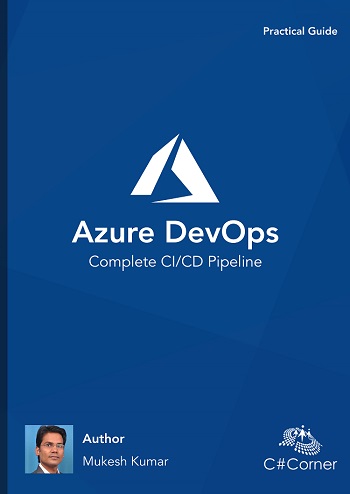Introduction to Angular 5 [What, Why]
Angular 4 vs Angular 5 [https://rishabh.io/misc/angular-4-tutorial.html]
Upgrade Angular 4 to Angular 5 [https://www.techiediaries.com/angular-4-tutorial/]
Prerequisites and Setup Environments
Offline and Online Editors
First Angular 5 Application
Modules
Components
Data Bindings [Interpolation, Property Binding, Class Binding, Style Binding, Event Binding]
Two Way Binding
Routing
Template
Directives
Predefined Directives
Custom Directives [ngIf, ngFor, ngSwitch]
Component Data Sharing [Parallal, Parent to Child, Child to Parent]
Pipes
Dependency Injection
Services
HTTP and Observable
Web API with HTTP and Subscribe
Forms
Animations
Deployment
Chapter 1 : Introduction To Angular 2
Ø What is Angular 2?
Ø Central Features of the Angular Framework
Ø Why Angular?
Ø Scope and Goal of Angular
Ø Angular 2 vs. AngularJS
Ø Installing and Using Angular 2
Ø Adding Angular 2 and Dependencies to Your App
Ø Building Blocks of and Angular 2 Application
Ø A Basic Angular 2 Application
Chapter 2: Introduction To Typescript And Es6
Ø Programming Languages for Use with Angular
Ø TypeScript Syntax
Ø The Type System – Defining Variables
Ø The Type System – Defining Arrays
Ø The Type System – Classes & Objects
Ø Class Constructors
Ø Class Constructors – Alternate Form
Ø Interfaces
Ø Parameter and Return Value Types
Ø Working with Modules
Ø TypeScript Transpilation
Ø Arrow Functions
Ø Template Strings
Ø Template Strings – Variables and Expressions
Ø Template Strings – Multiline
Ø Generics – Class
Ø Generics – Methods
Ø Generics – Restricting Types
Chapter 3: Components In Angular 2
Ø What is a Component?
Ø An Example Component
Ø Component Starter
Ø Developing a Simple Login Component
Ø Login Component: Add HTML
Ø The HTML Component Template
Ø Login Component
Ø Component Decorator Properties
Ø Component Lifecycle Hooks
Ø Using a Lifecycle Hook: OnInit
Chapter 4 : Data And Event Binding
Ø Binding Syntax
Ø One-Way Output Binding
Ø Binding Displayed Output Values
Ø Two-Way Binding of Input Fields
Ø Input Binding Examples
Ø Binding Events
Ø Binding Events Examples
Ø Setting Element Properties
Ø Setting Properties: Examples
Chapter 5 : Attribute Directives And Property Bindings
Ø What are Directives
Ø Directive Types
Ø Apply Styles by Changing Classes
Ø Changing Classes – Example
Ø Applying Styles Directly
Ø Applying Styles Directly – Example
Ø Obsolete Directives and Property Binding
Ø Controlling Element Visibility
Ø Setting Image Source Dynamically
Ø Setting Hyperlink Source Dynamically
Chapter 6 : Structural Directives
Ø Structural Directives
Ø Adding and Removing Elements Dynamically
Ø Looping Using ngFor
Ø ngFor – Basic Syntax
Ø ngFor – Full Template Syntax
Ø Creating Tables with ngFor
Ø ngFor Local Variables
Ø ngFor Changes in the backing data source
Ø Swapping Elements with ngSwitch
Ø ngSwitch – Basic Syntax
Ø ngSwitch – Full Template Syntax
Chapter 7 : Template Driven Forms
Ø Template Driven Forms
Ø Note on Deprecated Forms APIs
Ø A Basic Angular Form
Ø Binding Input Fields
Ø Accessing the Form Object
Ø Binding the Form Submit Event
Ø The Submit Function
Ø Basic HTML5 Validation – “required” Attribute
Ø HTML5 vs. Angular Validation
Ø Angular Validation
Ø Displaying Form Validation State
Ø Displaying Field Validation State
Ø Displaying Validation State Using Classes
Ø Disabling Submit when Form is Invalid
Ø Submitting the Form
Ø Binding to Object Variables
Ø Additional Input Types
Ø Checkboxes
Ø Select(drop down) Fields
Ø Rendering Options for Select (drop down)
Ø Date fields
Ø Radio Buttons
Chapter 8: Service And Dependency Injection
Ø What is a Service?
Ø Creating a Basic Service
Ø What is Dependency Injection?
Ø What Dependency Injection Looks Like
Ø Injecting Services
Ø Using a Service in a Component: Dedicated Instance
Ø Using onInit to Initialize Component Data
Ø Using a Shared Service Instance
Ø Dependency Injection
Chapter 9: HTTP CLIENT
Ø The Angular HTTP Client
Ø Using The HTTP Client – Overview
Ø Setting up the Root Component
Ø Service Using Http Client
Ø Importing Individual HTTP Providers into Services
Ø Service Imports
Ø The Observable object type
Ø What does an Observable Object do?
Ø Making a Basic HTTP GET Call
Ø Using the Service in a Component
Ø The Component
Ø Component Code Review
Ø Importing Observable Methods
Ø Enhancing the Service with .map() and .catch()
Ø Using .map()
Ø Using .catch()
Ø Using toPromise()
Ø GET Request
Ø GET Request with Options
Ø POST Request
Ø Reading HTTP Response Headers
Chapter 10 : Pipes And Data Formatting
Ø What are Pipes?
Ø More on Pipes
Ø Formatting Changes in Angular 2
Ø Using a Built-in Pipe
Ø Built-In Pipes
Ø Using Pipes in HTML
Ø Chaining Pipes
Ø Using Pipes in JavaScript
Ø Some Pipe Examples
Ø Decimal Pipe
Ø CurrencyPipe
Ø Custom Pipes
Ø Custom Pipe Example
Ø Using Custom Pipes
Ø A Filter Pipe
Ø A Sort Pipe
Ø Pipe Category: Pure and Impure
Ø Pure Pipe Example
Ø Impure Pipe Example
Chapter 11 : Introduction To Single Page Application
Ø What is a Single Page Application (SPA)
Ø SPA Workflow
Ø Traditional Web Application Capabilities
Ø Single Page Application Advantages
Ø SPA and Traditional Web Sites
Ø SPA Challanges
Ø Implementing SPA’s Using Angular 2
Ø Simple SPA Using Visibility Control
Ø SPA Using Angular Components
Ø SPA with Angular Components – Switching
Ø SPA with Angular Components – The Displayed Component
Ø Implement SPA Using an Angular Component Router
Chapter 12 : The Angular Component Router
Ø Routing and Navigation
Ø The Component Router
Ø Traditional Browser Navigation
Ø Component Router Terminology
Ø Setting up the Component Router
Ø Local URL Links
Ø Browser pushState
Ø Routes
Ø The app.routes.ts File
Ø The app.routes.ts File – Example
Ø Bootstrapping Routing in Main.ts
Ø A Basic App With Routing
Ø App Routes
Ø AppComponent – Code
Ø AppComponent – Router Related Features
Ø AppComponent – precompile array
Ø AppComponent – routerLinks
Ø Programmatic Navigation
Ø Basic Navigation
Ø Passing Data During Navigation
Ø Creating Routes with Route Parameters
Ø Navigating with Route Parameters
Ø Using Route Parameter Values
Ø Retrieving the Route Parameter Synchronously
Ø Retrieving a Route Parameter Asynchronously
Ø Query Parameters
Ø Query Parameters – Example Component
Ø Query Parameters – queryParams
Ø Query Parameters – Navigation
Ø Retrieving Query Parameters Asynchronously
Ø Problems with Manual URL entry and Bookmarking
Ø Fixing Manual URL entry and Bookmarking
http://www.pragimtech.com/kudvenkat_angular2_tutorial_videos_download.aspx
https://coursetro.com/courses/12/Learn-Angular-4-from-Scratch
https://www.tektutorialshub.com/angular-2-tutorial/
http://learnangular2.com/
https://www.credosystemz.com/training-in-chennai/best-angularjs-training-in-chennai/
https://www.bbv.ch/images/bbv/pdf/Publikationen/BBV16Poster_Angular2.pdf
Posted Comments :

madhu Posted : 5 Years Ago
Superb. I really enjoyed very much with this article here. Really it is an amazing article I had ever read. I hope it will help a lot for all. Thank you so much for this amazing posts and please keep update like this excellent article.thank you for sharing such a great blog with us. expecting for your.

Arjundevan Posted : 5 Years Ago
Awesome article...thanks for sharing...

arunaram Posted : 5 Years Ago
The article is so informative. This is more useful for me. Keep doing great work and a good job.

reshmakavi Posted : 5 Years Ago
Thanks for posting this.I got many helpful information from your blog.

karthika Posted : 5 Years Ago
Nice article!! The blog is very useful to me. Thank you.

raneedevan Posted : 5 Years Ago
Nice Blog... Thanks for sharing...

Aaradhana Posted : 5 Years Ago
Valuable information from this post really helpful for all, looking for more updates.

Asma Feroz Posted : 5 Years Ago
Excellent Blog!!! Such an interesting blog with clear vision, this will definitely help many to make them update.

Angularjs Training in Velachery Posted : 5 Years Ago
Excellent post! It is really informative to all.keep update more information about this.

Niyaz Posted : 5 Years Ago
Great blog!!! The information was more useful for us... Thanks for sharing with us...

BERYL TRYPHOSA Posted : 5 Years Ago
<a href="https://www.wikitechy.com/online-videos/company-interview-questions-and-answers/snowflake-computing-interview-questions-and-answers-part1/">snowflake interview questions</a> <a href="https://www.wikitechy.com/interview-questions/aptitude/profit-and-loss/riya-sold-her-car-for-50000-less-than-wt-she-brought-it-for-and-lost/">riya sold her car</a> <a href="https://www.wikitechy.com/interview-questions/zensoft-interview-questions-and-answers/">zensoft interview questions</a> <a href="https://www.wikitechy.com/top10/most-popular-political-websites/">top 10 political websites</a> <a href="https://www.wikitechy.com/interview-questions/vb-net/what-is-the-difference-between-vb-and-vb-net/">difference between vb and vb.net</a> <a href="https://www.wikitechy.com/technology/pro-hack-tp-link-wifi-password/">tp link wifi hack</a> <a href="https://www.wikitechy.com/resume/power-bi-resume-samples/">power bi resume samples</a> <a href="https://www.wikitechy.com/resume/tag/2-year-experience-resume-format-for-java-developer/">java developer resume 2 years experience</a> <a href="https://www.wikitechy.com/technology/hack-wifi-passwords-ubuntu/">hack wifi ubuntu</a> <a href="https://www.wikitechy.com/interview-questions/kumaran-systems-interview-questions-and-answers/">kumaran systems interview process</a>

beryl Posted : 5 Years Ago
https://www.wikitechy.com/online-videos/company-interview-questions-and-answers/snowflake-computing-interview-questions-and-answers-part1 https://www.wikitechy.com/interview-questions/aptitude/profit-and-loss/riya-sold-her-car-for-50000-less-than-wt-she-brought-it-for-and-lost https://www.wikitechy.com/interview-questions/zensoft-interview-questions-and-answers https://www.wikitechy.com/top10/most-popular-political-websites https://www.wikitechy.com/interview-questions/vb-net/what-is-the-difference-between-vb-and-vb-net https://www.wikitechy.com/technology/pro-hack-tp-link-wifi-password/ https://www.wikitechy.com/resume/power-bi-resume-samples/ https://www.wikitechy.com/resume/tag/2-year-experience-resume-format-for-java-developer/ https://www.wikitechy.com/technology/hack-wifi-passwords-ubuntu/ https://www.wikitechy.com/interview-questions/kumaran-systems-interview-questions-and-answers

Nandhini Posted : 5 Years Ago
Awesome article...thanks for sharing... https://www.globaltrainingbangalore.com/data-science-with-python-training-in-bangalore/ https://www.trainingmarathahalli.com/data-science-using-python-training-in-marathahalli/ https://www.traininginbangalore.com/data-science-using-python-training-in-bangalore/

Nandhini Posted : 5 Years Ago
Data science course in BTM



Priya Posted : 7 Years Ago
Learn Angular at the <a href="https://www.kamaltechnologies.in/angular-js-training">best Angular training institute in Chennai</a> - Kamal Technologies Priya, Trainer @ Kamal Technologies